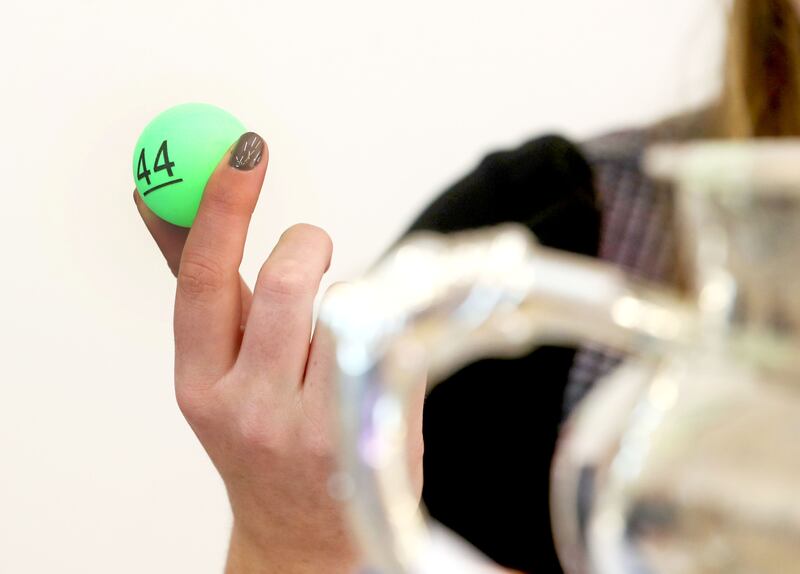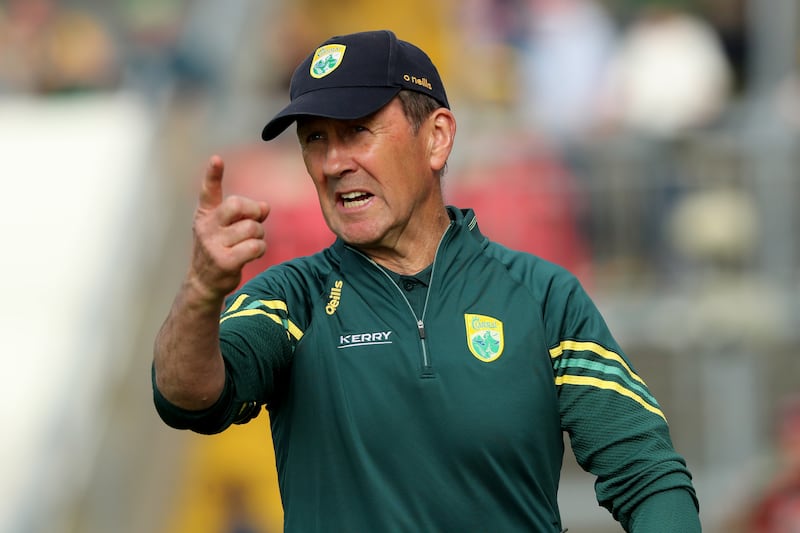Last Tuesday evening some players would have arrived at intercounty training none the wiser of the afternoon’s events.
People are busy with work or college or family commitments; some days just managing to get on the road to training and beat the traffic is an achievement. Plus, everybody is different, some players like to be informed while others couldn’t really care less.
“What do you make of the draw?”
“The draw?”
The Kerry paradox: Why the aristocrats of intercounty football never dominate club scene
Weekend Gaelic games previews: Final places on the line in three provinces
Ciarán Murphy: This week has reaffirmed – but also recalibrated – our national identity
Tyrone footballer Conor Meyler announces intercounty retirement
Tuesday afternoon is a strange time for a championship draw but it seems the condensed nature of the season necessitates the make-up of the All-Ireland groups to be initiated before the provincial finals have all been played.
But it’s still peculiar to have draws for one competition when others are not yet over. I can remember as a kid watching the provincial championship draws on television, you’d be talking about them in school the next day, who Dublin got and so on.
It was the same with the likes of the FA Cup draws when there might be a camera crew broadcasting the live reaction from some non-league outfit – you know the scene where a squad is all gathered together in a room, huddled around a TV awaiting their prize. And if they happened to be plucked out to face Manchester United, the players would explode from their seats as if they’d just won the cup.
Admittedly, they were different times – and certainly, in terms of the GAA, the provincial championships were a very different animal then and held far greater relevance. But those draws did feel important, they mattered.
Truth is, it’s difficult to know what level of importance you can put on last Tuesday’s All-Ireland round-robin draws. The GAA weren’t exactly hyping the draws up in advance and loads of the players wouldn’t have known they were on, never mind supporters.
But the bigger problem is the format of the round-robin. Be prepared for it again over the coming weeks, the jeopardy debate is incoming.

As a player last year, my main concern was getting ready for games, but even then it felt strange that three teams would progress from a group of four teams.
I understand the GAA want to avoid the potential for dead rubbers in the final round of matches, but I’m not convinced the payback for inserting such a wide safety net actually benefits the competition.
You have 16 teams involved in a series of 24 games to get rid of four teams. It doesn’t really add up and I don’t believe you deserve to go through if you come third in a group of four.
If the idea of having three teams progressing from the groups is to ensure there is something at stake in the last round of games, one of the unintended consequences is the relevance of the opening match is massively diluted. You are merely kicking the competitiveness element down the road.
Four teams advanced to the knockout stages last year having picked up only one win from their three group games – Tyrone, Kildare, Roscommon and Monaghan.
By accommodating a third team qualifying, it seems the GAA are putting a lot of stock in mitigating against a situation of dead rubbers which may or may not even happen. And even if it were to materialise, isn’t that what happens in nearly every other sport where group stages are used?
There are some groups which will be competitive all the way to the last round and there are others which will have produced a top two before the final round of matches.
However, in a scenario where only two teams progress, the importance of winning your first game would be heightened substantially. It would feel like knockout football from the off.
Look at Dublin’s potential fixtures in this year’s round-robin. Should they beat Louth in the Leinster final, they will start with a home game against Roscommon, followed by an away trip to Breffni Park to play Cavan. Dublin’s last game could – if Mayo were to lose the Connacht final – be against Kevin McStay’s side at a neutral venue.
Now, of those three fixtures – Dublin v Mayo is by a distance the most attractive, but by that stage there is a pretty decent chance both teams would already have booked their place in the knockout stages.
There might still be some sorting out as regards jostling for finishing positions in the top three, but chances are neither team would be standing over a trapdoor entering that fixture.
However, if only two teams were advancing to the knockout stages then there would be a greater chance of that Dublin-Mayo contest taking place against the backdrop of significant consequences for the loser.
By having eight teams going through, rather than 12, the GAA would also gain a weekend back which could be used to help alleviate the stacked fixture list. An extra weekend in such a condensed championship structure could go a long way.

Either way, chances are the Mayo and Galway players were aware of the All-Ireland draw before they arrived at training last Tuesday night – simply because of how it impacts their All-Ireland ambitions.
Knowing the various pathways on offer before the provincial finals are played is a flaw in the current system and timing of the draws.
I can’t imagine the implications of winning and losing were discussed by the management with the squads at any stage this week, but certainly players would have chatted informally about it among themselves.
It won’t have any bearing on how both teams approach Sunday’s Connacht final, Mayo and Galway will go all out to claim a provincial title. Players are competitive, they just want to win, so in that context what comes afterwards doesn’t enter their mindset.
But it doesn’t change the fact that both teams will ultimately be judged on their All-Ireland campaign. As with everything, the result will determine the narrative.
If the team which wins the Connacht final ends up third in their round-robin group, and then loses a preliminary quarter-final, while the Connacht loser goes deeper in the All-Ireland, then you can already guess how the conversation will be spun.
The Mayo and Galway players can’t control such talk, but what they can influence is what happens in Pearse Stadium on Sunday, and I expect both camps will only concern themselves with the All-Ireland round-robin after events at Salthill.
The outcome of Tuesday’s draw won’t have disappointed too many people in the Dublin or Kerry set-ups though, because if the Leinster and Munster finals go as expected then both teams appear to have a very manageable route to the All-Ireland quarter-finals.
It will allow Dessie Farrell and Jack O’Connor to build familiarity in terms of their starting 15 while also providing a chance to rest some players in the latter stages of matches or get game-time for others.
Dublin and Kerry can now manage their load all the way until the All-Ireland quarter-finals, which gives them an advantage compared to the likes of Donegal, who have already had two titanic battles against Derry and Tyrone.
There’s no doubt that, from a morale point of view, Donegal must be in a really good place right now and tactically the group will have learned so much and developed massively over the last few weeks.
But from a physical perspective, we’ll have to wait to see if it catches up on them later in the championship.


















